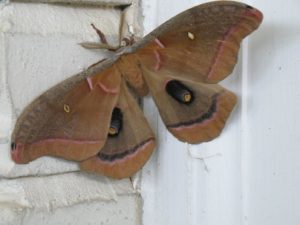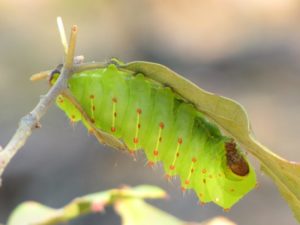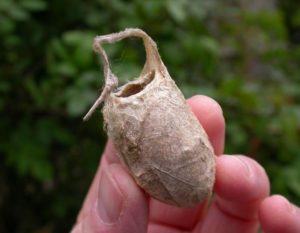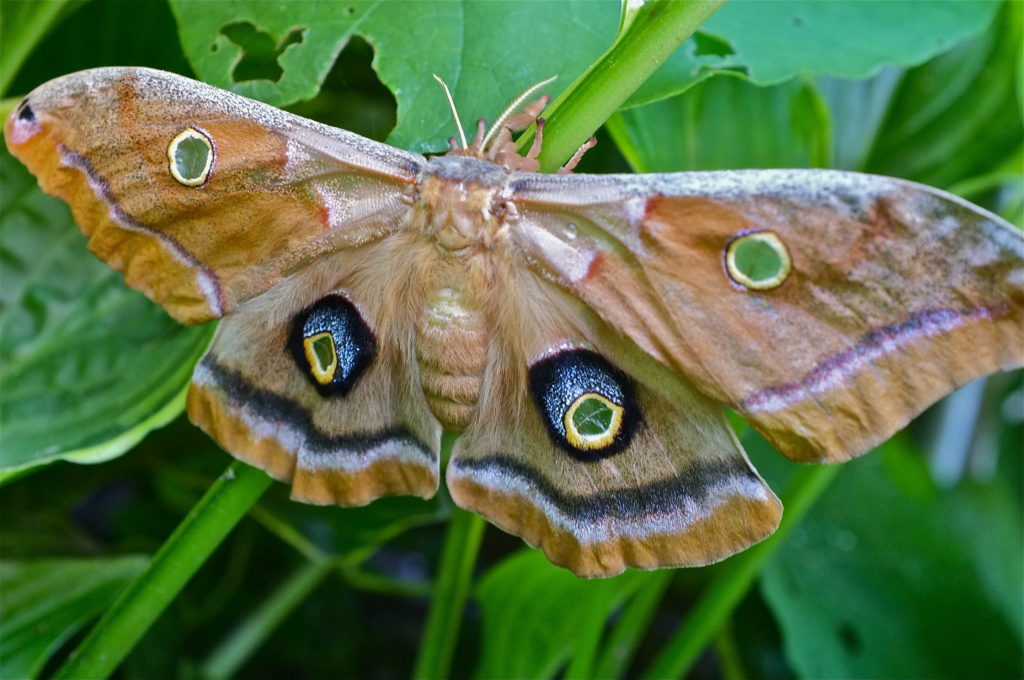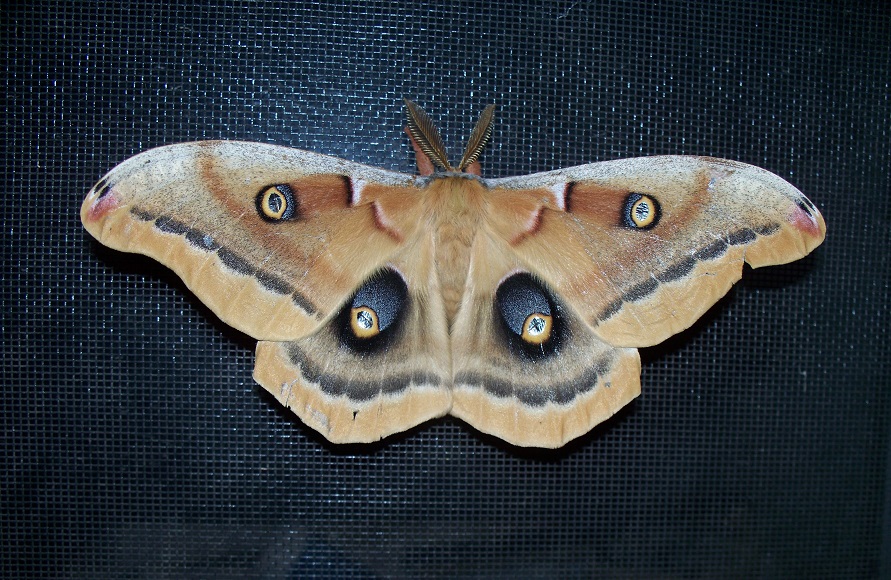Polyphemus Moth (Antheraea polyphemus)
The Polyphemus Moth, one of the most commonly distributed species in North America, was named after the famous one-eyed Cyclops of Greek mythology, mainly because of the prominent eyespots adorning their wings. Dutch merchant Pieter Cramer first described it in the year 1776.
townnews.com
Scientific Classification
- Family: Saturniidae
- Genus: Antharea
- Scientific Name: Antheraea polyphemus
Description and Identification
Caterpillar
The caterpillars, 7cm long are yellow after emerging from the eggs. They undergo significant color change with each molt, appearing green in the final instar with a brown head and silver spots to the sides. Their abdominal segments look colorful because of the yellowish slanting lines with a purplish tinge. The segments also have six sets of tubercles and bristles. The hairy projections could irritate the skin if touched but do not harm.
Pupa
The pupae remain encased within a single-layered, thick, elliptical cocoon. The female pupae vary in appearance from their male counterparts. The former has a longitudinal notch or indentation on the fourth abdominal segment that remains absent in the latter.
Adult Moth
Sexual Dimorphism: Both the sexes are easily distinguishable by their antennae pattern, appearing bushy in the males, and slender in females. The latter even have a bigger abdomen that looks more prominent when they carry eggs.
Color and Appearance:
Forewings: When opened, the reddish or yellowish-brown wings have transparent oval eyespots, small in size. White lines with pink edges run through the upper sides of their wings. When closed, the color is the same, but the eyespots hardly remain visible.
Hindwings: Here, the eyespots appear larger than the forewings, replicating an eye. When opened, the spots are purplish circled in yellow, black, or white rings. Towards the end, one can see prominent black lines with a pinkish-white border. When closed, the color remains unchanged though the eyespots are barely visible and the lines also appear faded.
Average Wingspan: 10-15 cm
Flight Pattern: Not recorded
Season: March – July
Egg
The oval-shaped eggs appear white, with broad brown bands surrounding them. They mostly remain fixed to their substrate with a brownish adhesive-like substrate.
Quick Facts
| Distribution | Southern Canada, 48 US states except for Arizona and Nevada, and Mexico |
| Habitat | Wooded areas, humid areas, urban environments |
| Predators | Yellowjackets, ants, parasitic wasps, raccoons, and squirrels |
| Lifespan of Adults | 3 months |
| Host Plants | Apple, ash, birch, elm, hazel, rose, dogwood, hickory, willow, and maple |
| Adult Diet | Does not eat |
Did you know
- As a caterpillar, the Polyphemus Moth can eat 86,000 times its weight.
- The luna and Polyphemus moth caterpillars are often confused for the other due to a similarity in appearance. Yet, they have visible differences. The larvae of the luna moth have smooth head capsules green or dark brown in color. In the Polyphemus moth, the capsules are rough-textured and brown.
- The pattern on their hindwings are similar to that on a great horned owl’s head, giving them scope to confuse predators.
Scientific Classification
- Family: Saturniidae
- Genus: Antharea
- Scientific Name: Antheraea polyphemus

